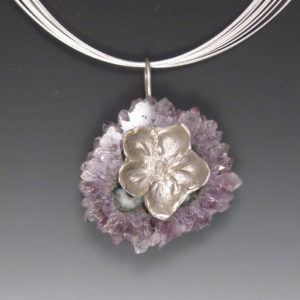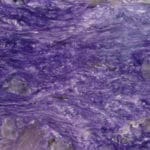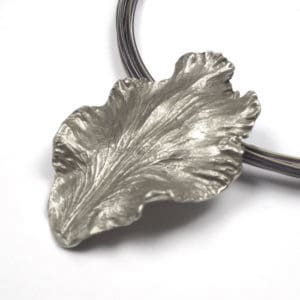Blooms and leaves cast into sterling are the focus of new “Organics IN Silver” line


What started out as a frustration, drove an experiment, and then became a glorious new collection!!
The forms and textures of the metal in the Organic Silver line are driven by the metal’s physical properties and how it respond to fire and the environment at the time it is melted. I did my best to try to match the texture of the free-form molten silver to the unusual minerals I was trying to use. But Russian charoite kept stumping me – try as I might, I couldn’t get the silver to echo the intricate striations of this mineral.

On my daily dog walks I noticed that the irises in my garden had petals with this kind of texture. If only I could capture the iris petal in metal … if only …. So I took a casting class to learn how. Except that the teacher mostly told me all of the reasons that one could NOT cast organics. They are too thin – molten metal will cool in a thin area way before it will flow and fill the whole space. They don’t burn out cleanly – little bits of ash will clog the channels that the molten metal needs to flow to fill the casting. They dry up – and when they lose water volume they get even thinner and more finicky. But remember in my bio where I said I was stubborn?

This success led to enthusiastically trying to cast hundreds of different flowers, leaves, twigs, and other natural elements. Most of them failed (See step 10 in see Casting Organics in 13 Simple Steps), but the ones that made it became a new line I call Organics IN Silver. Each time I took our puppy around the block, I would collect specimens of different plants. The dog got a lot of exercise and I got a huge variety of casting fodder. And I had lots of fun pairing up unusual mineral specimens with veined leaves, grooved petals, and all sorts of natural textures.
I also started to fall in love with the organic castings themselves and decided to leave some of these naked in the K.I.S.S. (keep it simple sweetie) collection. The iris petals especially drew me with all their furls and folds. Hydrangea blossoms looked like they could come back to life. So rather than being just the vehicle to display the mineral, the organic castings became the focus of some of my pieces. I also found that I could use some of my smaller stones, and even my more precious stones, as good pairings with the organics without overshadowing them.
(Funny aside: My then nine-year old son was worried that I would get in trouble for picking up leaves and petals from the sidewalk and that someone would stop me and ask what was in the plastic bag I was carrying. I explained to him that when you are walking a dog no one wants to know what is in the little blue plastic bag you are carrying :-).
How do we turn flowers into jewelry?
If you want a quick intro to lost wax casting in jewelry, see Basic description of casting
